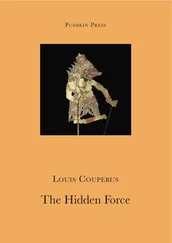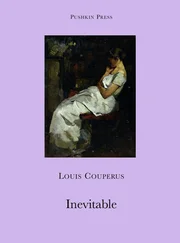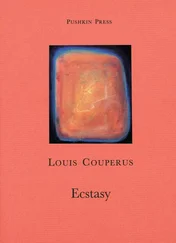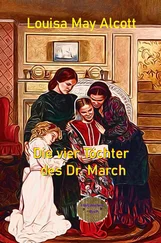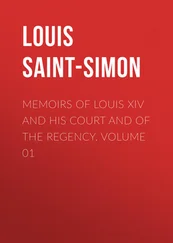What stands apart from the usual interests of such a novel is, obviously, the portrait of Eline herself — disturbing, multifaceted, unforgettable — which transcends, or, if you like, subverts, the genre in which it commandingly stands, lifting the individual work into another species of literary endeavour entirely.
But a second feature of the literary climate is even more important in considering the production of this twenty-six-year-old author: the enormous reputation then, throughout the reading world, of Leo Tolstoy (1828–1910). In one of the later chapters we find elderly Madame van Raat reading French and Russian novels, and War and Peace (published 1865–69) is specifically cited.
Tolstoy builds up his great novel from innumerable small episodes of ordinary life, familial, domestic, social and sometimes seemingly trivial (and, we should add here, it is our ease of reception of these and our belief in their complete authenticity that enable us to identify with those they feature when ‘history’ overtakes them in the form of Napoleon and his invasion of Russia). Just as Jane Austen said that ‘three or four families in a country village is just the thing to work on’, Tolstoy spoke of his fiction as deriving from the affairs of the deux cents familles to which he himself belonged. Couperus, in his first novel, was similarly drawn to writing about people of his own class (the only ones probably with whom he feels thoroughly at home), and profited by Tolstoy’s example. Indeed, as we follow the doings of the Van Erlevoorts, Verstraetens, Van Raats, and De Woude van Berghs, we can easily envisage them as friends of Tolstoy’s Rostovs. They would all have been perfectly at home at Natasha’s first ball. (And yet, for all their breeding, with the Van Erlevoorts prominent here, and their money, with the Van Raats the richest, Couperus’s people are far nearer in their values and mores to ourselves than are Tolstoy’s; both their pastimes and their more serious aspirations belong to a modern capitalist society based on commerce rather than to the semi-feudal one we encounter in the great Russian.)
But I suspect that the young Couperus was even more influenced by the Tolstoy of Anna Karenina (published 1875–78). Whereas the cumulative episodes of War and Peace unite into an epic of a people during a significant segment of historical time, those out of which Anna Karenina is constructed are shot through with our intensifying awareness of its central figure, and the predicament she apparently wills onto herself and, involuntarily, onto those close to her. This, unlike its predecessor, is above all a novel of moral and psychological investigation and dissection. ‘Vengeance is mine, saith the Lord, and I shall repay’ is the motto Tolstoy chose for it, and in retrospect we can see how it informs every scene, no matter what sense of the humdrum, of the randomness of existence it may also offer. Eline Vere works on us in this manner too. We can see this in the very way Couperus has decided to introduce us to Eline.
From the merry preparations of the young people in the very first chapter she is conspicuously absent. ‘Such a shame Eline is not here!’ her aunt-through-marriage exclaims. ‘She is not feeling very well,’ Madame Verstraeten is told; it is a question of ‘nerves’ apparently, ‘the affliction of the younger generation’.
So we do not meet Eline until the second chapter, and when we do, we encounter her at nighttime, at half-past two in the morning. (To the British and American readers of today these members of Hague society keep astoundingly late hours, just as they all have a surprising amount to drink.) And we first see her ‘looking rather pale in a white flannel peignoir, with her hair loose and flowing,’ the last a favourite symbol in nineteenth-century paintings, from the Pre-Raphaelites through to Edvard Munch, of a girl’s rejection of the restraints of conventional respectability. ‘Languorous and graceful’, Eline has absented herself from the jollifications of her peers through a ‘whim of indolence and ennui’, and has been regretting it ever since, unable to relieve her melancholy even by reading. When her brother-in-law, Henk, chides her for yielding to yet another black mood — Henk, the first man she was ever seriously attracted to, and who, probably more than any other, still holds her heart — she breaks down in tears:
The urge to pour her heart out was too strong to resist. What was she living for? What use could she be to anyone? She wandered about the room, wringing her hands and lamenting without pause. She didn’t care if she died within the hour, she didn’t care about anything at all, it was just that existence was so futile, so useless, without anything she could wholeheartedly devote herself to, and it was all becoming too much to bear.
What is Eline’s malady, and what is its meaning when viewed in the context of her social world? Which is also to ask, what is its meaning for the novel as a whole? In Anna Karenina’s case the cause of her undoing is her trust in the truth of passion over other truths, other considerations. On account of this trust she undervalues the importance of society itself, which exacts retribution on her of both an outward and an inward kind. This is not to say that Tolstoy accepts society on its own (so often hypocritical or cynical) evaluation; far from it. But he does believe that it is only through principled unselfishness that a satisfactory life can be led, and that this entails taking society into account. We see in Anna Karenina how the erratic Levin, who, like War and Peace ’s Pierre before him, has a normal man’s dissolute past, realizes that a reciprocally giving married life with Kitty will benefit not just himself but the larger world as well.
Such thinking is present also in Eline Vere . Paul van Raat is as silly and selfish as young men often are, indeed maybe more so than many because of the wealth and lofty social position into which he was born, the very thought of which makes him proud and a touch reckless. But he is also warm-hearted and observant of others, and through the love he feels for Frédérique and the marriage with her that he will sustain, he can not only repay his debts to society but make it a better place (this being fittingly emblemised in his becoming Mayor of a comparatively small provincial community). But Eline will make no contribution of this kind whatsoever. In common with Tolstoy’s Anna, what she will bequeath to the society that has produced and nurtured her is a death that at once distresses and disconcerts it. Why? What went wrong?
Eline’s flaw is not , like the Russian tragic heroine’s, related to intensity of sexual reaction. If anything Eline strikes us as deficient in normal erotic feelings. The baritone Fabrice, Otto for the greater part (she has to be cajoled into accepting him as fiancé), Vincent, the mysterious figure of Lawrence St Clare — there is no evidence that she is sexually aroused by any of them. Nor is there much evidence that men generally, while admiring her beauty and her social grace, respond to her physically, as — to take examples from literature — men, including her own husband, do to Flaubert’s Emma Bovary, or those in Christiania’s élite do to Hedda Gabler in Ibsen’s virtually contemporaneous play (1890). What attractions Eline feels for the men in her life, what emotions they have brought out in her very quickly dissolve into day-dream. Fabrice — whose picture she will buy for her albums, like any starstruck shop-girl — scarcely has any reality for her off the boards of the stage on which he sings Gounod. Vincent’s secretive disposition, compounded by his insecurities of money and health, she soon distorts into a novelette invalid’s yearning for love, which she could somehow in a fantasy-world encounter. Even Otto, for whom she does know something not unlike love, becomes for her chiefly an embodiment of masculine good sense on which she will be able eternally to depend.
Читать дальше

